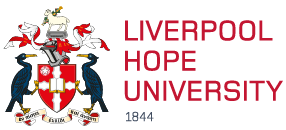Following the UK government’s recent Race Disparity Audit, PhD Candidate in Sociology Asli Kandemir discusses the issue around identifying ethnicity.
The UK Government has recently published the long overdue Race Disparity Audit. Almost inevitably, the report has drawn both criticism and support from experts in the field. If one would like to understand what the statistics and graphics used in the audit mean, s/he can find a variety of expert commentaries that have already been published in different media organs. The advantages of having such an audit, the inadequacies of the audit overlooking the structural issues, and the next steps that should be taken after this audit have clearly been commented. However, it is necessary to approach the issue from another perspective, namely, the categories used to identify ethnicity.
There is a large variety of academic work demonstrating that an individual may have multiple identities, which do not conflict with each other. For example, a young person who is the second or third generation of an immigrant family may bear a national (e.g. British), a sub-national (e.g. Welsh), and an ethnic (e.g. Turkish) identity, demonstrating the multiple and complex nature of identity in contemporary society. For such a young person, it is easier to identify her/himself as ‘White-British’ or ‘White Other’ as ‘Whiteness’ can come from Britishness as well as from their upbringing, and even their skin colour. In other words, s/he may see her/himself as another member of mainstream society. Moreover, in her own perception, s/he may be equal to her/his ‘White’ peers. However, the methodology, upon which the audit is based, invites closer scrutiny, using, as it does, a binary opposition to identify who is who. Are you ‘White’ (which, in the original website of the audit, occasionally refers to only ‘White British’ and occasionally refers to all ‘White’, including Europeans) or are you ‘Other’? What if you are ‘White’ and still ‘Other’/ed? Or what if you have an ethnic origin, a slightly different skin/hair/eye colour, or a non-UK country of birth, but still identify as some do, as ‘White-British’?
As some experts comment, such an important (governmental) attempt to identify structurally problematic areas and solve them out requires to be precautious to use such a strict dichotomy. It may, perhaps unintentionally, lead towards the creation of ‘subaltern internal others’ in this country, or reinforce their already existing subalternity, meaning that ethnic minorities may be even more deprived of certain ‘capitals’, ranging from economic to social and even communicative.
Today we live in an age in which racial, ethnic, and religious identities are imbricated, which all are also signifiers of social class, and vice versa. Indeed, this explains well why this audit uses ethnicity as a measurement while defining it with a racial category – e.g. ‘White’. Even the title of the audit uses the term ‘race’, but the measure is, rather, ethnicity. The complexity of the issue stems not only from the overlap of race, ethnicity, and religion with social class, but also from the ambiguity about the meaning of all those categories.
The government’s intention in this audit may well be genuine, and in fact, the attitude to resolve racial inequality in the long term may be sincere. Nevertheless, the vaguely constructed methodology used to define ethnicity poses a non-negligible challenge. Furthermore, the imposition of a single ethnic category on (young) people to be selected or defined remains as another challenge for a policy agenda aiming resolving inequality in all aspects and platforms. In fact, it may endanger the aim by bringing further polarisation to the society.



